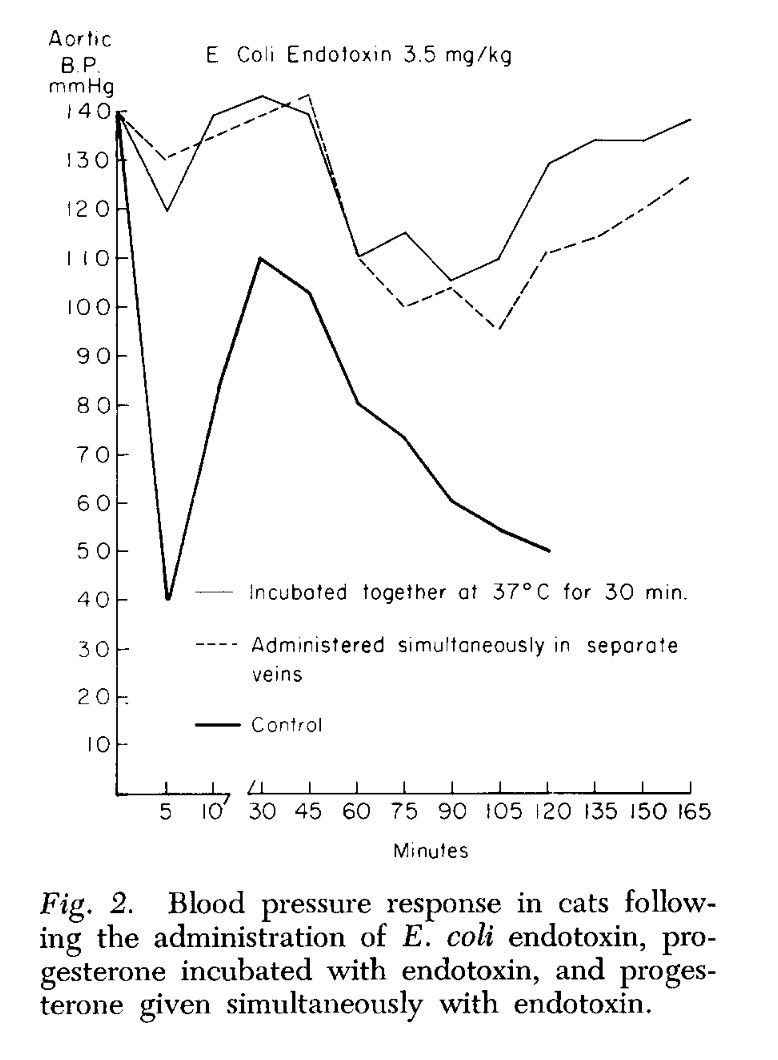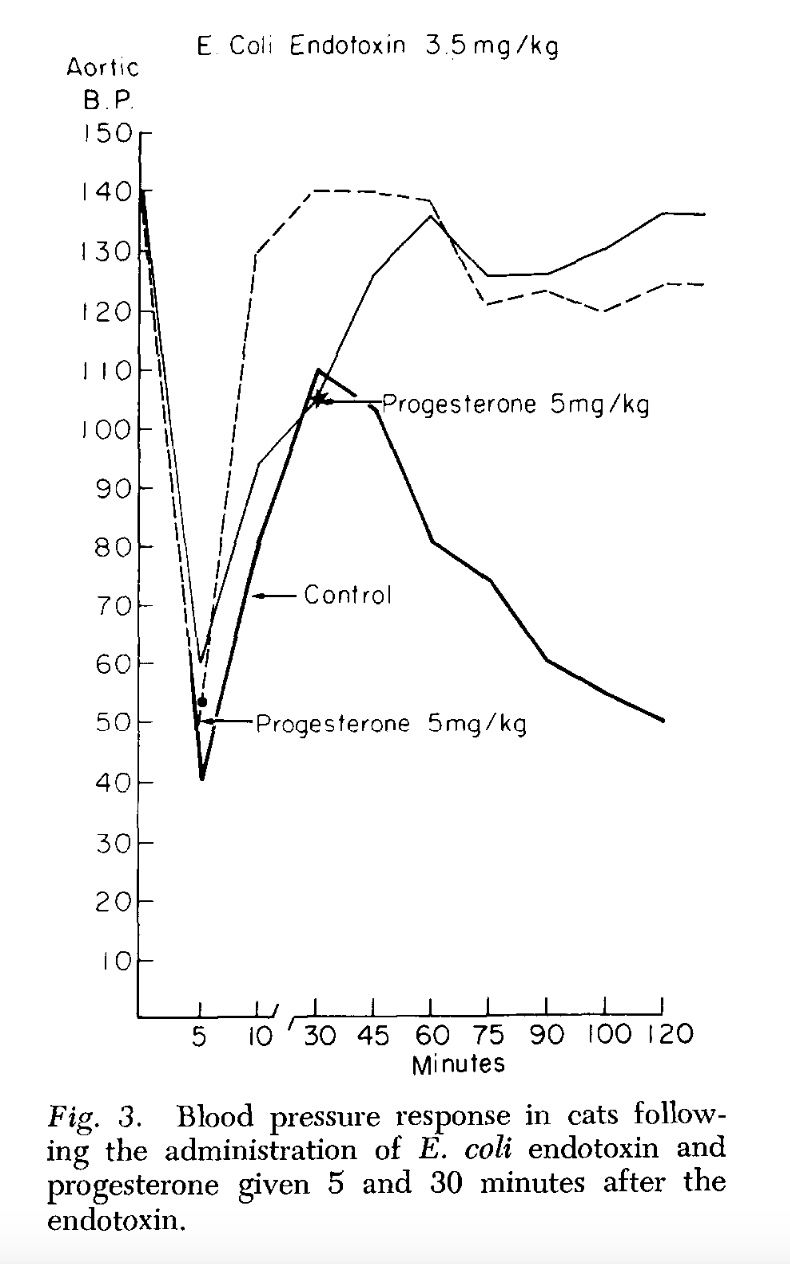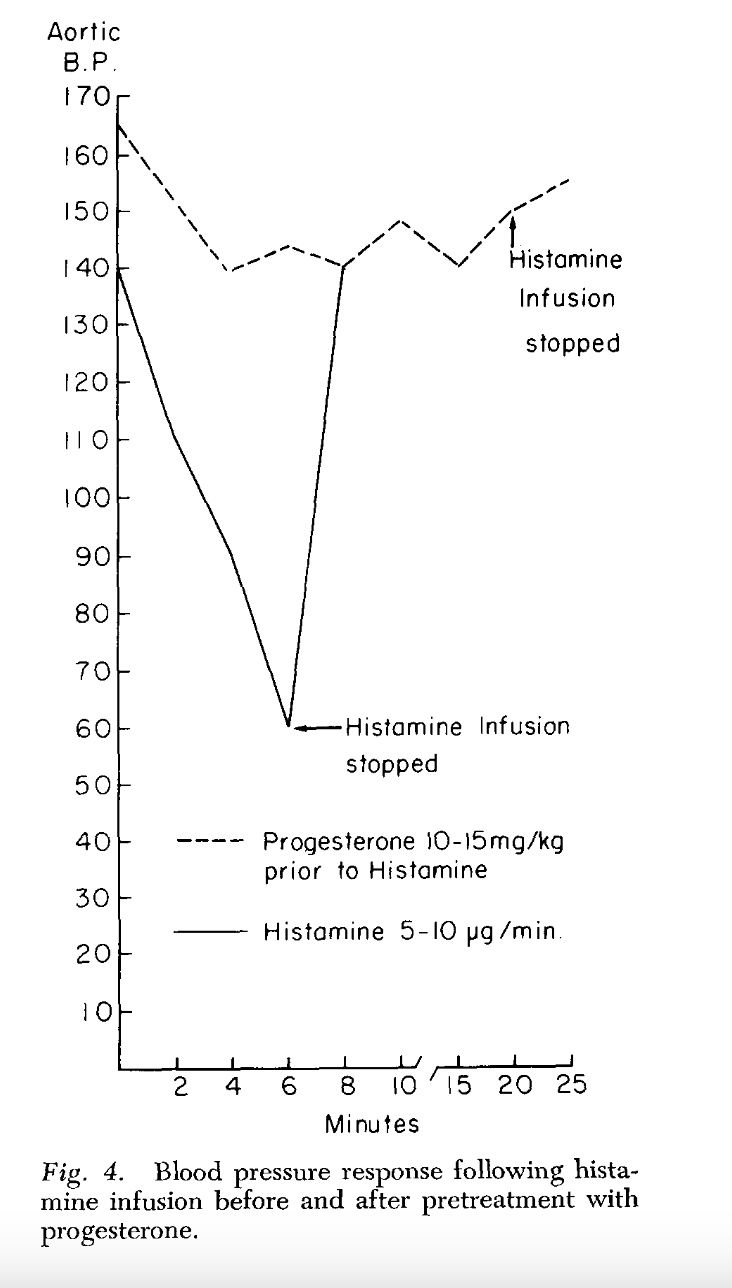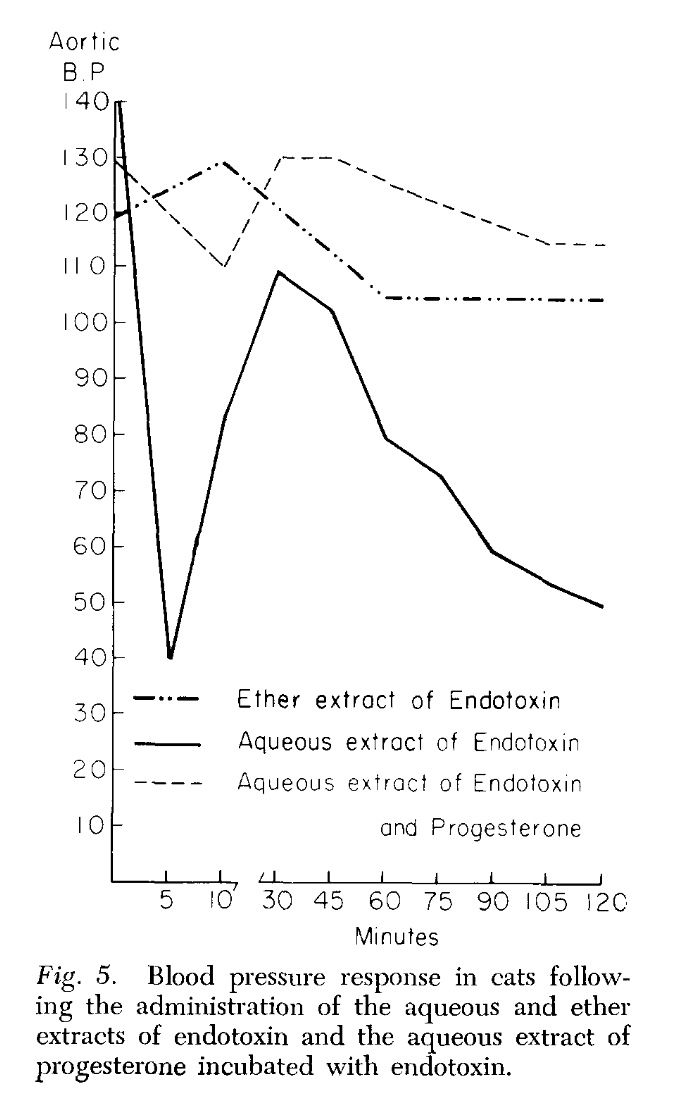Progesterone is protective against lethal doses of histamine and endotoxin, may bind to endotoxin directly
-
haidut made an underrated post on The Forum That Shall Not Be Named on the protective effect of progesterone on cats administered lethal doses of histamine and endotoxin. At the time of the post the study was not available anywhere online. I am pleased to announce the full text is now indexed by scihub, available here:
Most notable is the possibility that progesterone may actually bind to and inactivate endotoxin directly:
Endotoxin, progesterone, and endotoxin that had been incubated at 37°C. with progesterone for one-half hour were extracted with ether. The ether was evaporated and the resulting extract diluted with saline. Progesterone is ether-soluble, and as was expected, when the progesterone was extracted by itself most of the progesterone was in the ether extract. When ether extracts of the progesterone-endotoxin mixture were prepared, there was little yield in the ether extract. The ether and aqueous extracts of endotoxin and the endotoxin-progesterone mixture were administered to a series of animals and the blood pressure and survival rate determined.




The preliminary results of our work with the ether and aqueous extracts of progesterone and endotoxin, and the increased survival obtained with prior incubation of endotoxin with progesterone, appear to indicate that progesterone may form an in vitro bond with the endotoxin compound. This has been suggested as a possible alternate explanation of the action of aldosterone and endotoxin (3, 4). Whether this results in direct inhibition of the endotoxin or the inhibition is mediated through unknown substances in vivo is pure conjecture at this time.
HED is 1mg/kg, or ~80mg for a ~180lb subject. I can personally attest that this dosage is far more effective than activated charcoal or any other binder when it comes to alleviating heavy endotoxin load.
haidut's original blogpost can be found here: Progesterone may bind and deactivate endotoxin (LPS) directly
-
 D DavidPS referenced this topic on
D DavidPS referenced this topic on
-
Can progesterone be taken indefinitely, or does the body become capable to unregulate processes that start to clear what it deems as elevated levels of a hormone?
I'm sure Haidut has mentioned that before. Homeostasis is such a b!tch. Just let me have my fun.
-
@stag Progesterone cream just as effective or must it be oral?
-
@stag thank you so much for this, I always wanted to read this study fully, much appreciated

-
While it was suspected by the authors that progesterone may bind to endotoxin directly, another mechanism of its protection may be by increasing the ability of albumin to bind LPS:
One of estrogen's effects is to lower the amount of albumin in the blood. Estrogen causes the liver to synthesize less albumin, partly by causing the messenger RNA to be destabilized and degraded. (Iron can have some similar effects on liver RNA.) When there isn't enough albumin in the blood, water moves from the blood into the tissues. Albumin binds oily substances, and its conformation seems to be opened when it binds them. Progesterone is known to adsorb strongly to proteins--it has been called a "cardinal adsorbant," meaning that it can bind in ways that cause the protein's adsorptive capacity to change I believe that progesterone and pregnenolone oppose estrogen in many ways, but the amazing speed with which they can cause major structural changes in the soft tissues convinces me that one of their first sites of action is the albumin molecule, causing its conformation to open in such a way that it is able to more strongly bind water molecules. This physical change in albumin would change the blood's osmotic/oncotic pressure, causing water to flow into capillaries. As the edema is reduced, oxygenation is more efficient, because the pathway for oxygen diffusion becomes shorter.
Albumin has been described as a first line of defense against toxins, since it binds them until the liver is able to degrade them chemically. Progesterone, pregnenolone, and cholesterol are known to increase thc organism's resistance to a great variety of toxins. (Selye coined the name "catatoxic steroids" to describe steroids of this type.) If these steroids bind to albumin in a way that opens the protein to increase its binding capacity, that single process could explain the "catatoxic" effect, as well as the anti-edema effect.
- Ray Peat, From PMS to Menopause: Female Hormones in Context